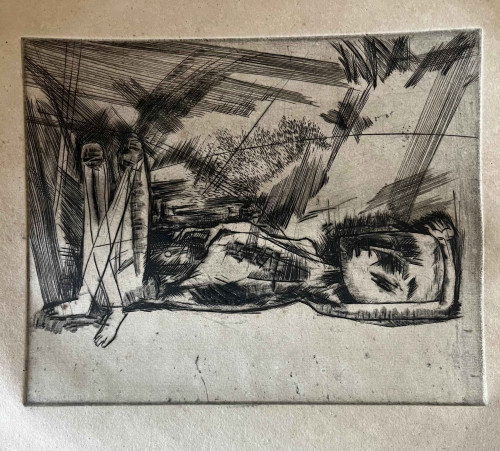Emotionally, the work evokes a deep sense of anguish, helplessness, and silence. The body, stretched horizontally, recalls famine victims, war casualties, or forgotten individuals lying outside the margins of society. Hore, who lived through the Bengal famine of 1943 and the Tebhaga peasant movement, often used his art to preserve the memory of those who suffered most but were least remembered. The scratches themselves feel like scars on human skin—Somnath Hore almost “wounded” the paper to echo the wounds of history. Looking at this, one doesn’t just see a figure; one feels the weight of suffering, abandonment, and yet also dignity in survival. It’s less about a specific person and more about the universal human body bearing the marks of collective trauma.

Size : 7 x 5.6 in